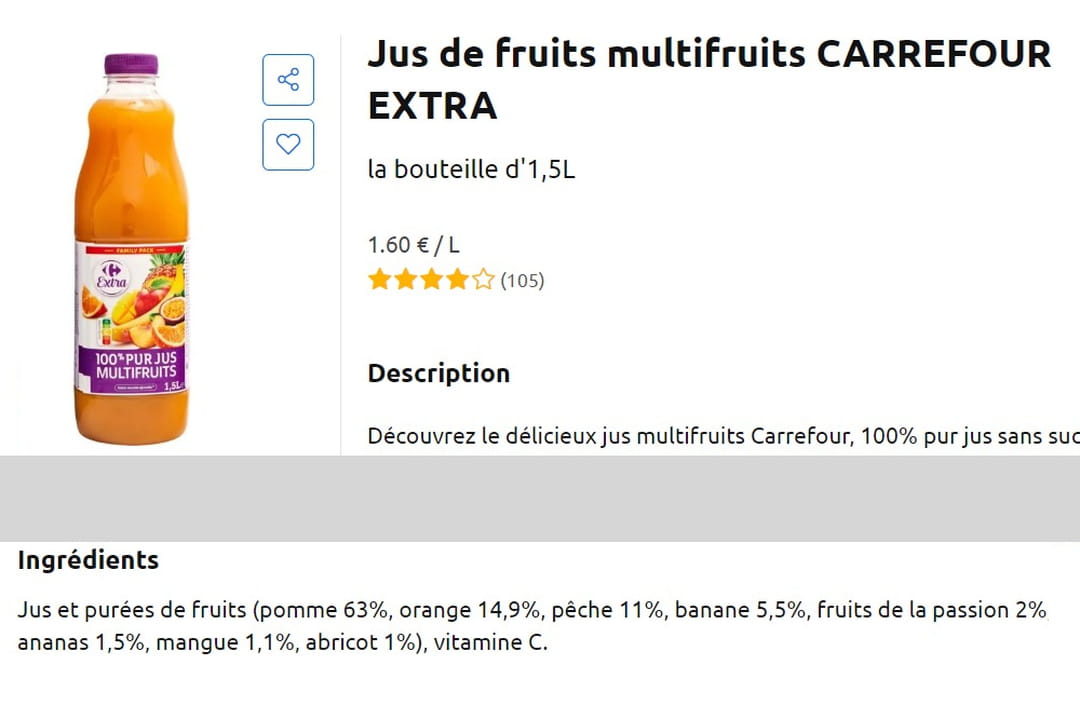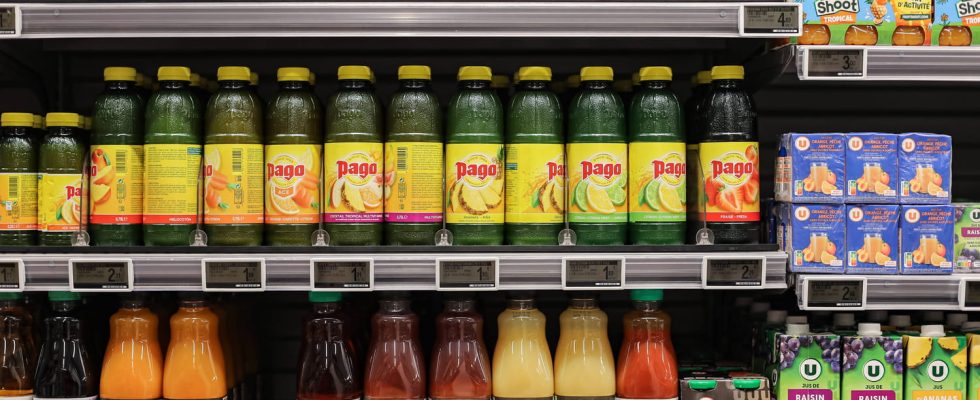“Multifruit” juices are supposed to be made from exotic fruits like pineapple, passion fruit and mango. However, these drinks are mostly based on a single fruit juice.
Buying good fruit juices often means opting for 100% pure juice in order to really have the desired taste. However, surprises are still hidden in the composition of these juices, as recently revealed by an American Internet user on. The latter took the example of different juices in which the consumer mainly expects to find exotic fruits. The latter are in fact mainly composed of… apple!
On the various photos of juice from the “Innocent” brand, the Internet user in question assures that they are all composed of at least 50% apple even though this is not the flavor displayed. Labels stuck on the back of the bottles to support this, it shows that a “Pink grapefruit and lychee” juice contains 70% apple juice or that a “Guava and lime” juice reaches for its part 66% of the same beverage.
What about in France? So-called “multifruit” juices also contain mainly apple. Next come orange, peach and grape in most cases. Exotic fruits, such as pineapple, passion fruit and mango, often highlighted on bottles, only come in second, third, or even fourth positions, often with less than 5% presence for each. in the composition.
The “100% pure multifruit juice” from the Carrefour brand, available on the distributor’s website at 2.53 euros per one and a half liter bottle, displays for example a surprising composition: 63% apple, 14.9% orange and 11% peach compared to only 2% passion fruit, 1 .5% pineapple and 1.1% mango. However, on the front of the bottle, the passion fruit, mango and pineapple together take up more space than the apple.

Same observation with Auchan, where the two liters of “100% pure multifruit juice”, at 3.59 euros, also contain 54% apple juice, 12% peach puree and 10% orange juice. Passion fruit is 5% and mango in puree form is present at 3%. Once again, these fruits are clearly highlighted on the label, much more than the apple.
Is this illegal? Not at all. As explained by Emilie Jorda, head of regulatory and scientific affairs at the National Interprofessional Union of Fruit Juices, for RMC Conso“there is no obligation to display the fruits present on the front of the packaging as long as they are clearly indicated on the back, on the label which lists the ingredients. Of course, there has a marketing choice by operators to highlight this or that fruit on the packaging.
How then can we explain this strong presence of apple? “Apple juice is an excellent base for multifruit juices because it has a fairly neutral taste” compared to exotic fruits and it sweetens the drink without artificial additions,” she explained. also a question of price: apples cost less than exotic fruits. It is therefore advisable to carefully read the list of ingredients on the bottle labels to get an idea of what really makes up these drinks.
